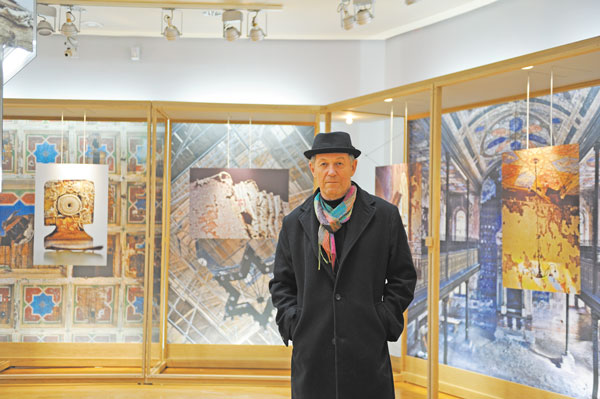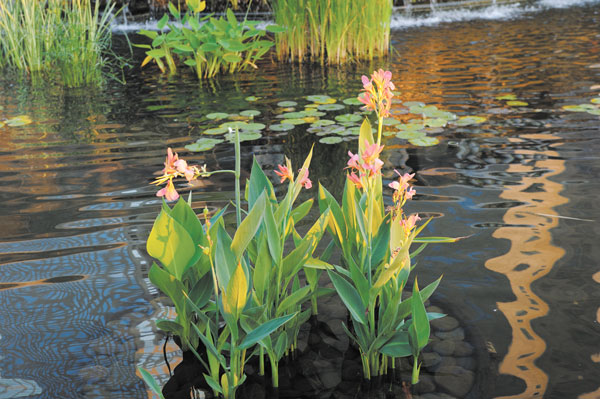No ice:
On June 10, the Battery Park City Authority issued an R.F.P. (request for proposals) for an ice skating rink but there were no bidders. “Staff will continue to have discussions with rink operators about how this might work next winter,” said Battery Park City Authority president Gayle Horwitz. She speculated that after the ball fields had been up and running for a winter with their new artificial turf, which is currently being installed, “ice skating providers might think about this project in a different way.”

Last chance for ‘Last Folio:’
“Last Folio,” an exhibit now in its last week at the Museum of Jewish Heritage, records a mission. Yuri Dojc, a successful commercial photographer in Canada where he sought refuge in 1968 when the Soviets occupied his native Czechoslovakia, returned to Slovakia in the last days of his father’s life. At his father’s funeral in January 1997, Dojc met a woman who was one of a thousand young Slovak girls who were on the first Nazi transport to Auschwitz. Three-quarters of the Jewish population of Slovakia died. This woman, Ruzena Vajnorska, led Dojc to other survivors, whose photographs are in the exhibit.
“What makes them special is that though many people left and started a new life, they stayed, and they stayed under eight or nine different regimes and they still survived, which is a miracle,” said Dojc. “All of them during World War II were either hiding or in concentration camps. Every one of them has an amazing story to tell.”
Their stories are written in their faces: Dojc also photographed crumbling synagogues, graveyards and books. The books are as fragile as ash, with moldering spines and curling pages. One in particular proved to be remarkable. “After about five years of working on this project,” Dojc said, “we came across a little town. This town had a beautiful synagogue. It was torn down by Communists. The night before the synagogue was torn down, people came and saved the books. Someone told us about a house where all the books had been put.”
Dojc and his producer, Katya Krausova, with whom he was making a film about the photographic journey, went to the house, and while Dojc was busy taking photographs in one room, Krausova went into another room and started looking through the books. They were stamped with the names of their owners. She returned to the room where Dojc was working. “What was the name of your grandfather?” she asked him. Dojc told her, “Jakob Deutsch.” Krausova handed him a small book. It had belonged to Dojc’s grandfather. “We stand in stunned silence,” she recalled.
Another exhibit, “Fire in My Heart:
The Story of Hannah Senesh,” is also in its last week at the Museum of Jewish Heritage. The Senesh exhibit closes on Aug. 7. The Museum is at 36 Battery Place. For information on hours and fees, go to https://www.mjhnyc.org.

Battery Park City in bloom:
Canna ‘Erebus’ The lovely salmon-colored flowers blooming in Battery Park City’s duck pond are Canna “Erebus” — bred for show but closely related to other species of Cannas of extraordinary usefulness to humankind. Cannas grow from rhizomes — an underground stem that sends out roots and shoots from its nodes. Canna rhizomes are rich in starch and can be used as food for both people and animals. The seeds are covered with a hard husk and are used in some parts of the world to make jewelry and musical instruments. Fiber from the leaves can be used to make paper. In addition — like oysters, which filter the water in which they grow — cannas filter pollutants and are helpful in cleaning contaminated wetlands.
All cannas originated in the New World. Battery Park City’s Canna “Erebus” was bred by Dr. Robert Amstrong at the famed Longwood Gardens in Kennett Square, Pa. Dr. Armstrong produced four cannas that tolerate being submerged in water and named them for famous ships. Canna “Erebus,” introduced in 1972, was named for a sailing ship used by the English explorer, James Clark Ross, on his Antarctic expedition of 1839-1843.
Summer classes at Asphalt Green:
Asphalt Green Battery Park City, which will be managing the community center now under construction at 212 North End Ave., had announced that its membership office would open on July 5. That date came and went without any word on what Asphalt Green memberships will cost or when they will be available. However, Battery Park City residents (and others) who just can’t wait can sign up for a Running Skills & Strength class that meets eight times on Tuesdays and Fridays starting Aug. 9 or an Outdoor Boot Camp class that meets Mondays and Wednesdays, starting Aug. 8. Both classes meet from 6:15 a.m. to 7:15 a.m. Running Skills costs $49 and Boot Camp costs $99. (Bargain hunters take note: The Boot Camp fee is $50 less than it was when the class was first offered in July.) For more information, call (212) 586-8779 or go to www.asphaltgreen.org/BatteryParkCity.
To comment on Battery Park City Beat or to suggest article ideas, email TereseLoeb@mac.com.
– BY Terese Loeb Kreuzer































